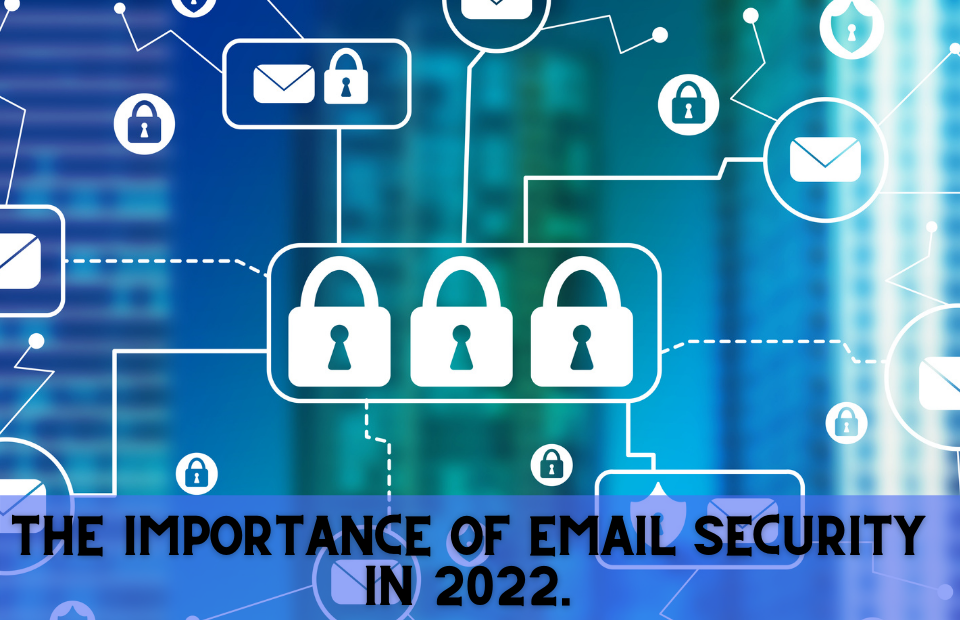Why is email security important? What are some of the most serious email security threats? How can you keep your company safe from email security threats? We try to answer these questions in this article.
Importance of email security
Because of cyber risks such as social engineering assaults that target enterprises via email, email protection is essential. Phishing emails, for example, persuade users to divulge personal information, approve phony invoices, or download malware that infect the network.

Attackers can build confidence and propagate their attack further by hijacking one person’s email account and sending phishing emails to all of that person’s contacts, posing as the owner of the hijacked email account. If the wrong email account is used or the wrong recipient is duped, a data breach might occur, costing millions of dollars.
Suggested Read:- Email Security for Your Organization — EmailAuth
Even the most basic email protection can prevent many security attacks from being successful, saving organizations billions.
Threats to email security
It’s critical to understand the most common email security risks in order to effectively defend yourself. Here’s a rundown of some of the most prevalent and severe risks to email security in businesses:
- Phishing attacks.
Did you know that every day, at least 3.4 billion phishing emails are sent out as part of a phishing scam?. This is a disturbing number that should serve as a reminder of the significance of email security. Worse still, phishing assaults are growing more complex, resulting in new forms of attacks that are becoming more effective at deceiving people.
- Spear phishing attacks.
This is the name for a subtype of phishing assaults that are highly tailored and targeted to a single person or company. These spear-phishing attempts frequently use the tone and style of an organization’s official communication, including copies of the organization’s letterhead and logo. They even make use of an email domain that looks similar to the organization’s — one that would pass a cursory inspection if one or two letters/numbers were transposed. These social attacks pose a serious concern because they have the ability to fool even the most experienced and intelligent people into making mistakes.
- Weak email passwords.
One method used by some attackers to get access to email accounts is to guess the password. Without the user’s awareness, accounts with weak or easy-to-guess passwords can be hijacked and used to send phishing attack emails from a valid corporate address. As businesses invest in password managers, it’s evident that the largest issue they’re facing is one that makes their security weaker.
- Malicious download links and attachments.
Many phishing assault emails contain malware-infested links or attachments. Depending on the type of malware that is downloaded, the particular impacts of this infection may differ. For example, ransomware would encrypt all of the data on the infected computer’s hard drive (or the hard drives of all other computers/databases on the network), then demand money (i.e. ransom) in exchange for the encryption key. Other malware programs, on the other hand, may just remain on the device they infect and passively gather information (such as login credentials or financial data), then transfer that data to an offsite server for later collection by the cybercriminal.
Steps to increase email security
One of the issues with email security is that many businesses expect that the basic email safeguards provided by a particular email client would suffice. While email service providers attempt to protect their customers from phishing scams and other social assaults that exploit their email clients, clever attackers research these security measures and devise ways to circumvent them.
As a result, in addition to what your provider provides, it’s critical to add additional levels of email protection. This can be done in a variety of ways, including:
- Scanning email attachments with antivirus/antimalware.
When it comes to email security, one of the most fundamental precautions is to verify email attachments with an antivirus/antimalware tool before downloading or running them. This can aid in the detection of dangerous software, allowing it to be contained before it does harm.
- Developing a security education and training program.
SETA (security education, training, and awareness) programs assist your staff in getting the fundamental cybersecurity skills they need to spot phishing scams. SETA programs can also serve to emphasize the necessity of adhering to security protocols in order to improve overall security or react to security issues.
- Basic password requirements must be obeyed.
Because weak passwords are a common cause of successful email account hijacking, following basic password standards (such as utilizing capital and lowercase letters, employing unusual characters, and changing passwords on a regular basis) can assist to avoid email account hijacking.
- Detecting phishing attacks using phishing detection tools.
Some specialist software applications can scan emails to see whether they’re part of a phishing assault scheme and flag them for users before they open them. This makes it easier for consumers to avoid falling prey to social assaults including phishing emails.
- Shortened URLs can be previewed before being opened.
Malicious download links and links to malware sites frequently use abbreviated URLs to hide the nature of the link, such as bit.ly instead of www.imgoingtoinstallmalwarenow.com, in the hopes that someone will click on it without thinking.
Do you require assistance in developing a complete email security solution to protect against security threats? To get started, contact the EmailAuth team now.
Source:- https://medium.com/@EmailAuth/the-importance-of-email-security-in-2022-7ce08a6577d3
